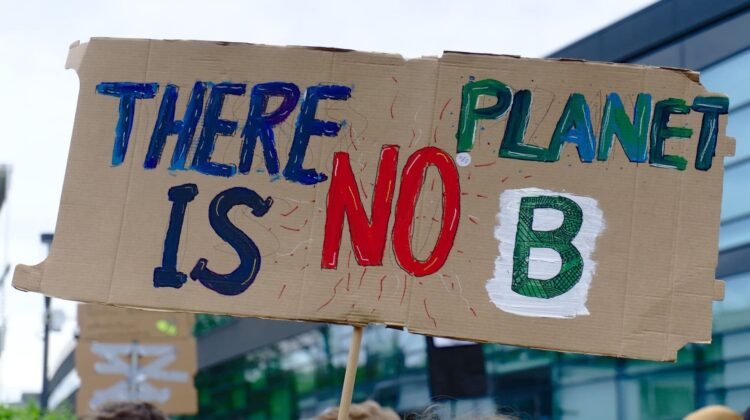
A pillar of the climate-smart agriculture movement is on shaky ground
Cover crops have gained elite status as a way for farmers to fight climate change. But a closer look at the growing body of research raises questions about their ability to lower greenhouse gas emissions.
It’s one thing the Biden administration, agribusiness leaders, soil scientists and environmentalists all agree on: farmers across the country should plant cover crops. The U.S. Department of Agriculture and food giants such as Land O’Lakes, Corteva, Bayer, and Cargill are paying farmers millions of dollars to sow rye, clover, radishes or other crops after, or even before, they harvest their corn and soybeans.
These off-season plantings have long been used to keep soil and nutrients in place and prevent runoff that fouls waterways. But that’s not why they’ve become a linchpin of the red-hot climate-smart and regenerative agriculture movements. With support from influential international bodies like the IPCC and leaders like former vice president Al Gore and U.S. Secretary of Agriculture Tom Vilsack, cover crops are being asked to do something new and high-stakes: draw atmospheric carbon into the soil to help fight climate change.
Cover crops, proponents argue, can soak up carbon dioxide, via photosynthesis, when fields are normally bare. When the plants are later killed and their roots break down, some of that carbon can remain in the soil.
A major pandemic program reduced crop insurance premiums for farmers planting cover crops, and USDA has boosted its cover crop cost-share program. Newly announced climate-smart commodities partnerships are expected to supercharge these efforts. And there’s a new and potentially powerful player in the game: private carbon markets that are starting to pay farmers for the carbon they sequester.
But as the hype for cover crops mounts, so does the scrutiny. New research suggests that cover crops may struggle to make a significant dent in agriculture’s greenhouse gas emissions. A review from earlier this year found that only a third of published studies in which researchers compared fields that were cover-cropped with those that weren’t reported significant gains in soil carbon. And a study published last month illustrated one major reason why farmers may be reluctant to plant cover crops. Researchers, using satellite data, found that cash crop yields in the corn belt dropped significantly—on average 5.5 percent for corn and 3.5 percent for soybeans—on fields that were cover-cropped, compared to fields that were not.
Such losses could dissuade farmers from planting cover crops, no matter the financial incentives. And they raise the risk of additional acres being plowed up to compensate for the lower yields. “Five percent in agriculture is a big deal, especially in a very high-production region,” says the study’s author David Lobell, a food security researcher at Stanford University. “That’s many millions of tons of grain.”
Even if cover crops can, in theory, add carbon to soil, it’s far from clear that the way they’re being deployed in practice is benefiting the climate. Many scientists want stronger evidence before endorsing cover crops as a climate solution.
“We need to be cautious based on some disappointing data we get from research experiments,” says Humberto Blanco-Canqui, a soil scientist at the University of Nebraska-Lincoln who conducted the review. “Planting cover crops is better than not doing anything, obviously, but expecting large changes in carbon may not happen.”
One thing that’s not in doubt: Agriculture is responsible for around 10 percent of U.S. emissions and a quarter of emissions globally. An estimated 133 billion tons of carbon, roughly a fourth of all carbon emitted by humans since the Industrial Revolution, has been lost from soils globally.
The growing recognition of agriculture’s climate problem has birthed a regenerative agriculture movement backed by scientists, private companies, the UN, and celebrities like Woody Harrelson and Rosario Dawson. All promote the idea that farmers could replenish their soils with that lost carbon, building soil health and a better climate at the same time. Also on board is President Biden, who in a 2021 speech to Congress extolled the idea of “farmers planting cover crops, so they can reduce carbon dioxide in the air and get paid for doing it.”
But the experience with another climate-smart practice — no-till or reduced-tillage farming — which many hoped could draw down large amounts of carbon dioxide, offers a cautionary tale. Those hopes were largely dashed when several studies in the late 2000s and early 2010s found that no-till often doesn’t add carbon to the soil; instead, it seems to mostly concentrate existing carbon near the soil surface. While reducing tillage can protect topsoil from erosion and improve soil health, scientists have grown less optimistic about its potential as a climate solution.
Author: Gabriel Popkin
Credits: This article by Gabriel Popkin, https://thefern.org , is published here as part of the global journalism collaboration Covering Climate Now.
